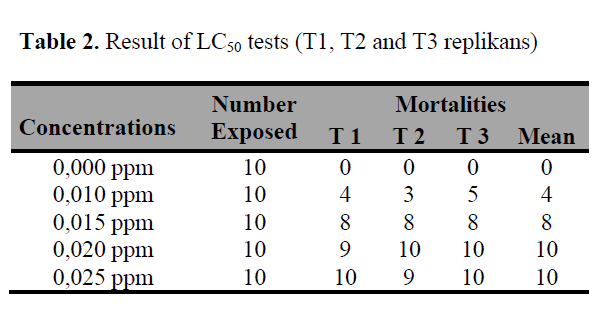

The number of surviving copepods were counted in each test container, at the same time each day, for 10 days and then a final count was completed on day 14. The tests were carried out in a constant temperature cabinet set at 0 plus or minus 1 degree C on a 16:8 light:dark photoperiod over 14 days. At five days a water change was completed by removing the old test solution and replacing it with freshly prepared test solution at the same concentration. No additional air, food or water was provided over the test period. Within each replicate vial, 9-12 copepods were carefully added.

Each treatment included four replicates and each test included eight controls. Test solutions were prepared by mixing stock solutions with filtered (0.45 microns) sea water and were stored in a constant temperature cabinet at 0 plus or minus 1 degree C for at least 2 hours prior to the start of tests in order to get to the required test temperature. Tests were carried out in 70 mL plastic vials (exposure vials) that contained 50 mL of test solutions. The concentrations used in the two tests are outlined in the excel spreadsheet (AAS4100_12-13_MixedMetalTox.xlsx). Three metals (cadmium, copper and zinc) were tested singularly and in metal mixture combinations. The tests were conducted during the 2012-2013 season at Davis Station, East Antarctica. Ctx_ver=Z39.88-2004&rft_val_fmt=info%3Aofi%2Ffmt%3Akev%3Amtx%3Adc&rfr_id=info%3Asid%2FANDS&rft_id=info:doi10.42845AD05F7&rft.title=Toxicity of single metals and metal mixtures to Antarctic Marine Copepods&rft.identifier=10.42845AD05F7&rft.publisher=Australian Antarctic Data Centre&rft.description=This metadata record contains the results of two bioassays testing the response of Antarctic marine copepods to both individual and combined metals via 14 day toxicity tests.


 0 kommentar(er)
0 kommentar(er)
